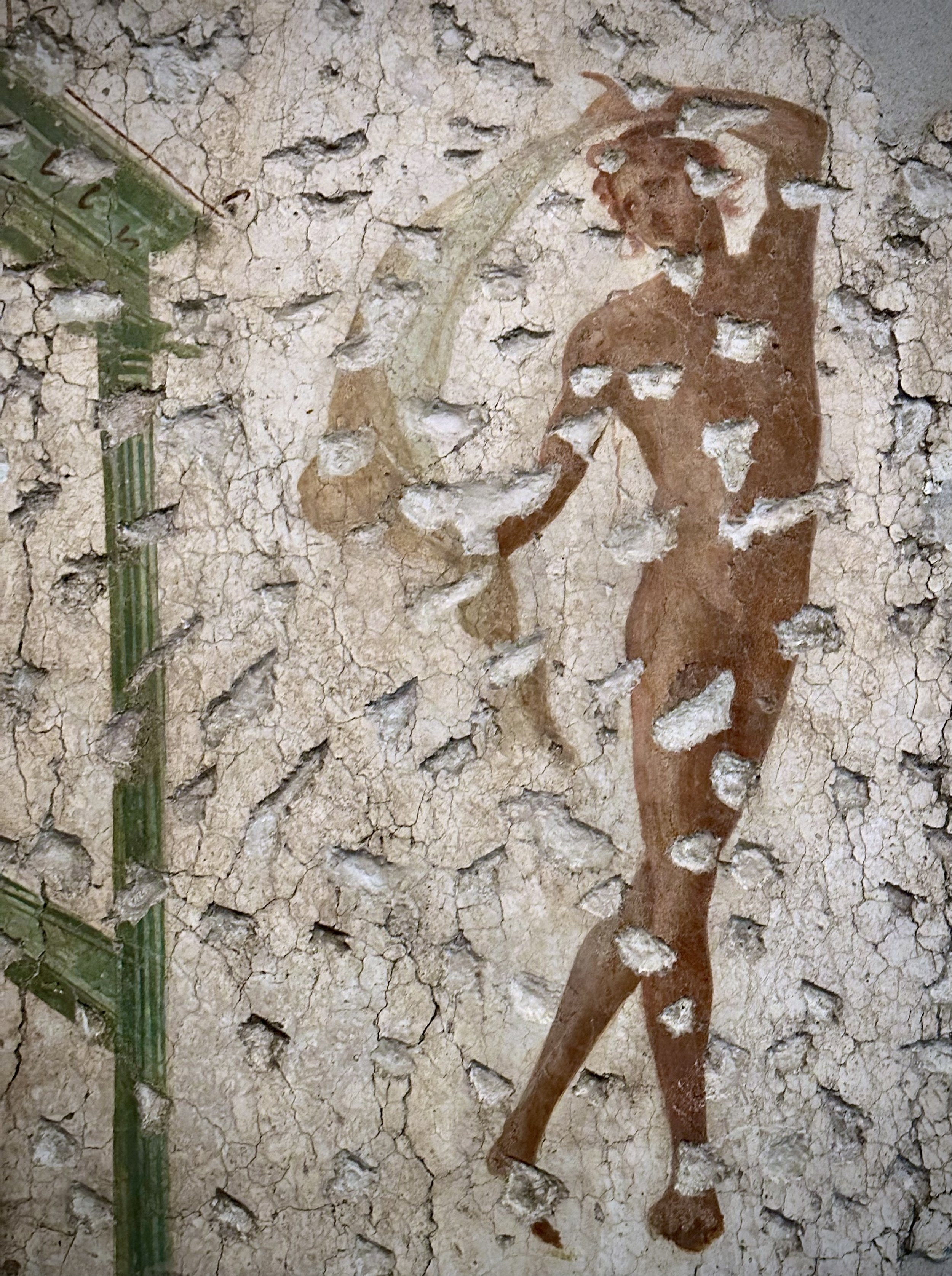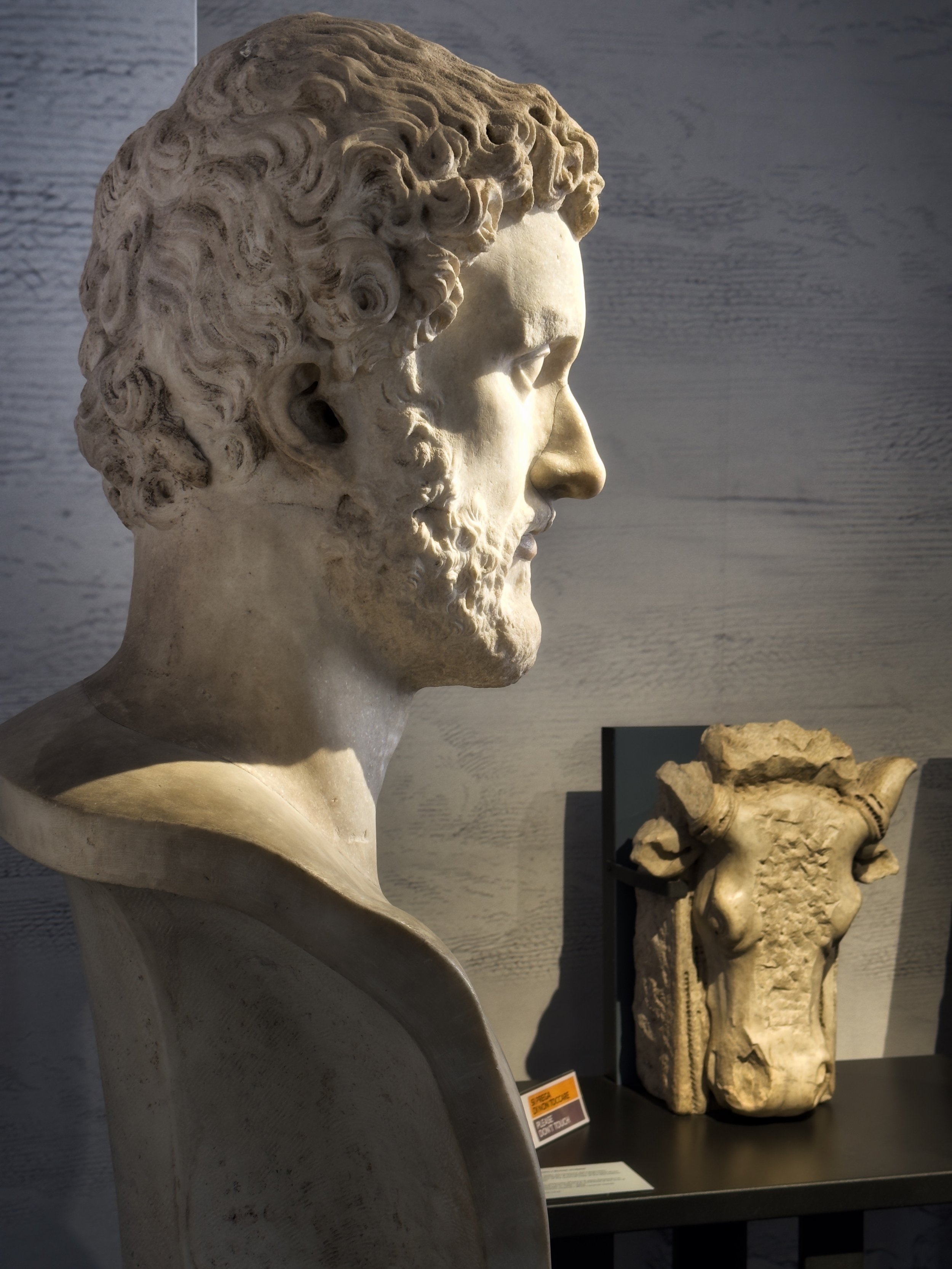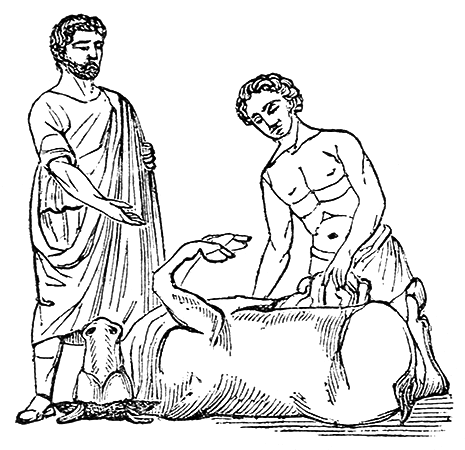HOW THE ROMANS DIFFERED FROM US
While Rome’s legacy lives on through its architecture, legal system and many inventions and customs, it was also a remarkably different society from our own. Below are just some of the ways of the ancient Romans that may make us scratch our heads or turn our stomachs. WARNING – if you’re squeamish, proceed with caution.
⁃ The Romans enjoyed cheese but hated milk and regarded the latter as a barbarian drink. Lack of refrigeration leading to rapid spoilage probably had something to do with this. Similarly, they loved wine but reviled beer, again citing the latter’s barbarian unsophistication.
⁃ They watered down their wine. The ratio was generally 2 parts water to 1 part wine, giving the concoction roughly the alcohol content of modern-day beer. Wine was often sweetened with honey, enhanced with spices, or even seasoned with seawater.
⁃ The upper classes ate some peculiar things including peacock, elephant trunk, and flamingo tongue. Dormice, a rodent larger than the mice we might see in our homes, were fattened, cooked, dipped in honey, sprinkled with poppyseeds and served as an appetizer. Yum?
Can you spot the red mullet in this mosaic? Also, is that octopus playing bass?
⁃ A fish caused an economic craze. The red mullet was an aristocratic delicacy prized for its flavor, but more so for the status it conveyed on those who served it. It was a contest to see who could serve the biggest specimens. At the peak of the madness, 3 fish sold for 30,000 sesterces. A loaf of bread cost half a sestertius, and while it’s difficult to convert ancient currencies to our own, 60,000 loaves of bread would cost us approximately $150,000 today - an exorbitant sum to pay for 3 fish! As with internet stock in the late 1990s and Dutch tulips in the 1637, the bubble soon burst, and latecomers were left holding the bag. Or the fish, as it were.
⁃ Most of the middle and lower classes lived in insulae, large apartment buildings that were often cheaply constructed and prone to collapse. In contrast to modern times, the more well-to-do lived on the bottom floors and the poorest lived on the highest floors. While those on the top had a great view, it was much harder for them to escape a fire unharmed, and fire was a constant menace.
⁃ Insulae dwellers essentially lived outside during the day. Most units were dark and didn’t have bathrooms, making the dumping of chamber pots on the streets a health problem. They also lacked kitchens, so residents would grab a quick bite to go from their local thermopolium, the predecessor to our fast-food restaurant. Menu items included fish, snails, lentils and roasted chickpeas. Garum sauce was a wildly popular condiment, essentially the ketchup of its day. It was made by fermenting fish guts in the sun. Think I’ll pass, thanks.
Insula dating to roughly 110 AD. Similar to our ‘mixed-use’ buildings today, an insulae’s upper floors were residences while ground floors were businesses, like the thermopolium which used this hearth. Thermopolia served quick, ready to eat meals, making them the precursors of our modern fast-food restaurants.
⁃ Romans rose early. The workday started at dawn and lasted about 6 hours. Afternoons were reserved for hygiene and socializing at the baths. The Romans didn’t have weekends, per se, but they did have quite a few religious holidays. And every 8th day the city held a market for area farmers to sell their products. Most workers were off, and kids didn’t have school on these occasions. Visitation of one’s friends was a common pastime.
Hadrian kicked off centuries of bearded emperors. Cows, however, were not known for sporting beards.
⁃ Men’s hair removal was a contentious issue. It was considered good manners for men to shave their armpits, but controversy raged about other body parts. Julius Caesar was fond of hairless legs; others regarded depilation as unmasculine. The emperor Hadrian was famously the first emperor to sport a beard, perhaps to honor the Greek philosophers he loved so much or to hide his acne scars. He set a trend, though, that would endure for nearly 2 centuries until Constantine I brought the clean-shaven look back into fashion.
⁃ Sex workers of both genders were licensed and taxed. Granted, this isn’t too dissimilar from current day Nevada. Prostitution was not only legal throughout the empire, but it was also viewed by many as a necessity, especially for young men who didn’t typically marry until their late 20s. I can’t find the exact quote, but the normally uptight Cicero said something to the effect, ‘what’s wrong with it? Who hasn’t done it throughout history? Who does it harm?’
⁃ Men and women of status were generally segregated at the public baths, each appearing at different appointed times. But a prostitute, being of low status, could bathe with the men and often earn her fee in short order.
⁃ While the Romans were aware of soap, they didn’t use it. Instead, after working up a sweat by exercising at the baths, one would then be rubbed down with olive oil. Then a strigil – a blunt-edged instrument – would be used to scrape off the oil, sweat and dirt before the patron entered the water. That doesn’t sound so bad, except the scraped oil concoction was often used to rub down the next patron.
⁃ They had some interesting forms of contraception. The rhythm method was popular, except they had it backwards, believing that women were at their least fertile near the middle point between their menstrual cycles. Women employed other methods to prevent pregnancy such as a cold-water flush, a smear of cedar resin and white lead, the wearing of magic amulets, and eating roasted mule testicles. (Yes, you read that right.)
Romans would often conduct business while doing their business.
⁃ They used public toilets, and I mean very public. Latrines were open-air and communal. There was no privacy, just a series of benches with holes in them. Men and women would sit next to each other to do their business. At least the toilets were free to use. On a few occasions, though, methane gas built up to the point the latrines would explode, killing some unfortunate eliminators in the process.
⁃ Urine was a prized resource used to wash clothes, set dyes, whiten hair, and even clean teeth. Ammonia was the key ingredient. Fullers, the launderers of the day, collected it from public latrines and were charged a tax for so doing. Titus, the son of then-emperor Vespasian, remarked to his father how gross this was. Vespasian held a coin to his son’s nose and asked him if it stank. When Titus replied no, Vespasian quipped, “yet it comes from urine.”
⁃ The Romans had some unusual cures. Acne was treatable with a slab of crocodile meat. Incontinence was cured by eating a wine-soaked hyena’s bladder. You could remove a wart by taking a pea in a pod, touching it to the wart, then wrapping the pea in a cloth and tossing it backwards over your shoulder. Gladiator sweat was used to remove wrinkles, and their blood was drunk as a panacea. Kissing a female mule’s nostrils would relieve a runny nose and hiccups (what is it with the Romans and mules??).
⁃ To give them energy, charioteers drank a concoction made from goat’s dung. Really nothing more to say there.
A haruspex, hard at work reading animal entrails.
⁃ Let’s wrap up with something less gross. The Romans were profoundly superstitious. Many of these beliefs have come down to us, such as the bad luck brought on by broken mirrors, black cats and spilling salt, and the belief that sneezes invited evil spirits. Others were much more alien. Augury was a practice used to predict upcoming events by observing the flight of birds and played a central role in the conflict between Romulus and Remus. A haruspex was a person whose job it was to read animal entrails to divine the future. Haruspexy was considered much more accurate than augury. My favorite example, though, involves the sacred chickens. To determine the timing of a military action, the sacred chickens were tossed some grain. If they ate, it was a good time to attack. If they didn’t, it was not. In a famous example, a general during the Punic Wars performed this ritual on his ship. The chickens did not eat. Frustrated and ready to strike, the general threw the chickens overboard and said, “If they will not eat, then let them drink!” Notably, he lost the battle.
These examples merely scratch the surface. And I’ve left out more severe actions such as feeding condemned criminals to starved wild beasts, dumping unwanted babies on trash heaps and using a sponge on a stick in place of yet-to-be-invented toilet paper. Oh wait – guess I didn’t leave those out! At any rate, be very glad some customs have changed.







